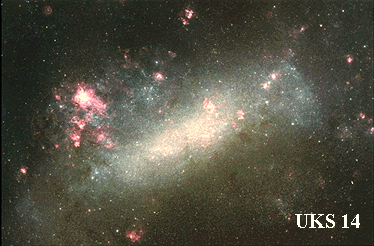Astronomy Picture of the Day
Discover the cosmos! Each day a different image or photograph of our fascinating universe is featured, along with a brief explanation written by a professional astronomer.
September 18, 1995

The Large Cloud of Magellan
Credit:
Photograph made from plates taken with the
UK Schmidt Telescope.
Colour photography by David Malin.
Copyright:
Anglo-Australian Telescope
Board